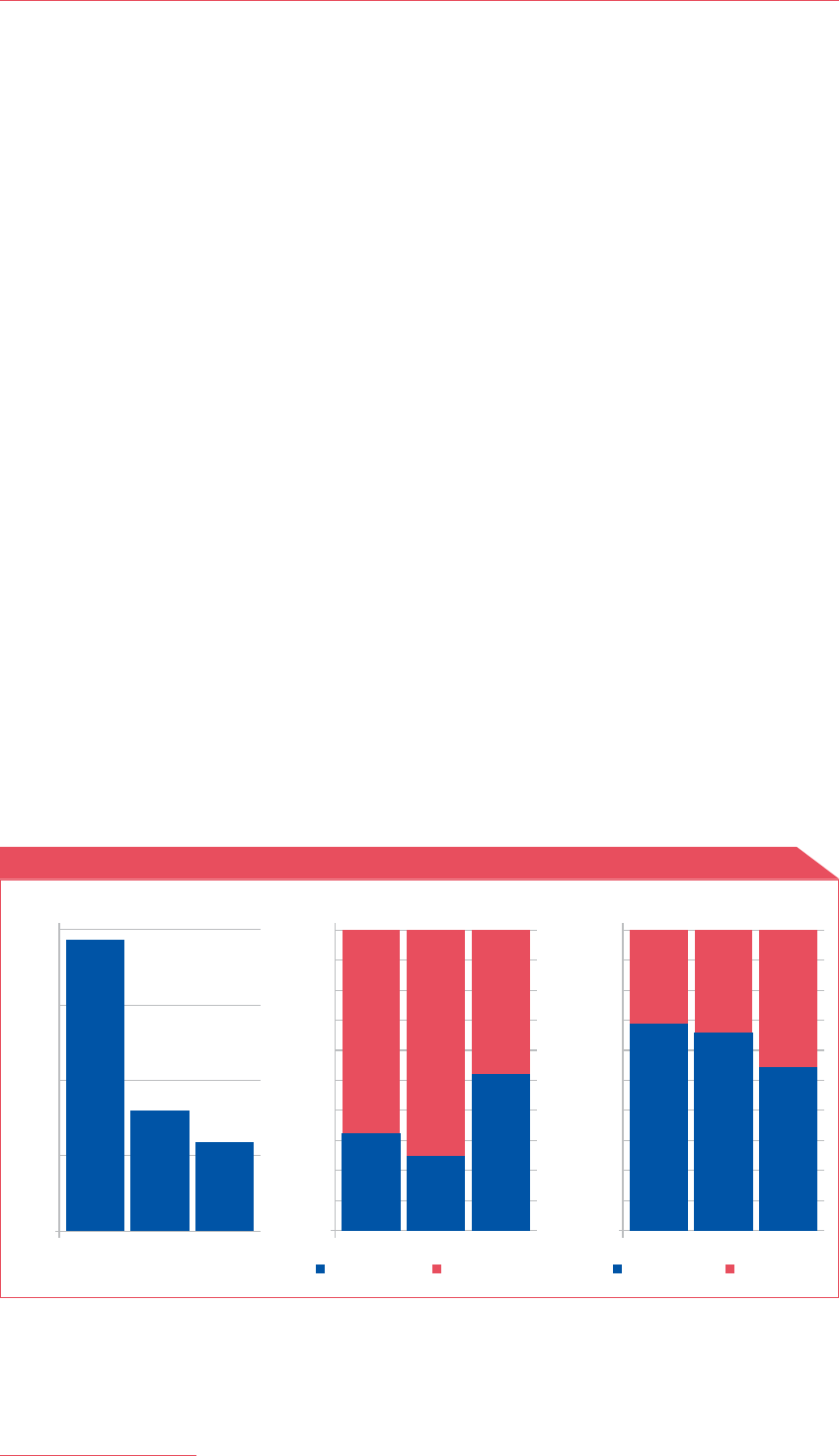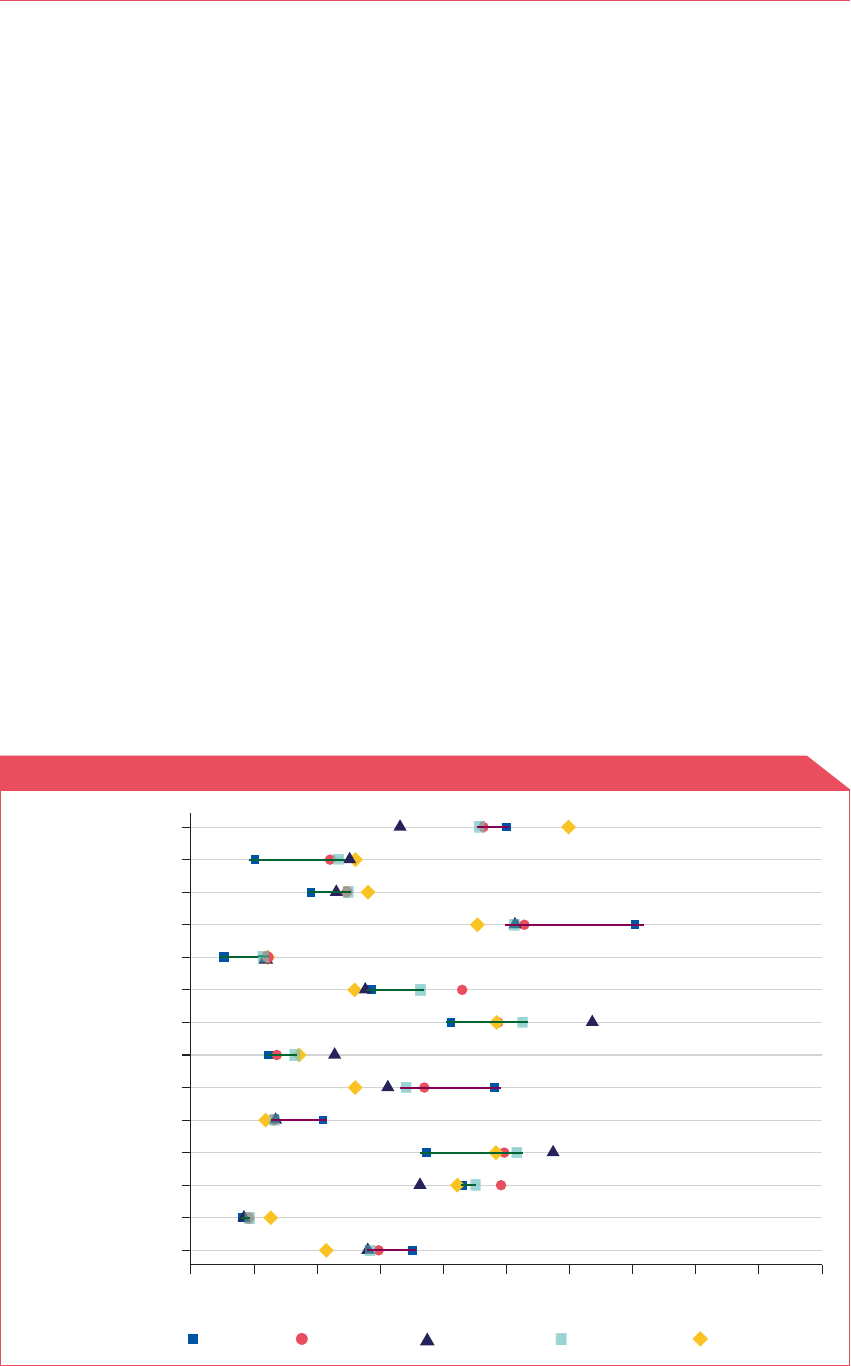
International Journal of Labour Research • Volume 11, Issues 1-2 (2022)
New wine in old bottles:
organizing and collective
bargaining in the
platform economy
Agnieszka Piasna
Senior researcher, European Trade Union Institute, Brussels, Belgium
Wouter Zwysen
Senior researcher, European Trade Union Institute, Brussels, Belgium

36
International Journal of Labour Research • Volume 11, Issues 1-2 (2022)
New wine in old bottles: organizing and collective bargaining in the platform economy
Introduction
Digital labour platforms are at the centre of the debate about the future of work, owing to
their role in advancing the use of digital technologies in mediating and organizing work.
Automation of organizational functions and online labour intermediation have expanded
the pool of available workers beyond geographical or organizational boundaries and
have radically transformed existing business models, jobs and the way work is organized,
challenging the relevance of existing ways of ensuring good working conditions and
income (Drahokoupil and Piasna 2017; Vallas and Schor 2020; Graham, Hjorth, and
Lehdonvirta 2017). In this context, maintaining social dialogue and organizing online gig
(platform) workers represent major challenges. Moreover, digital labour platforms are
pioneering solutions in terms of algorithmic management, digital surveillance, remote
work and cross-border outsourcing, which are increasingly being adopted in the oine
economy. Developments in the platform economy are thus crucial in providing lessons for
collective interest representation and mobilization in changing labour markets. There is a
need to examine the strategies adopted by trade unions to face these challenges in order
to offer recommendations for future action.
This article addresses these issues by exploring the concerns that trigger the resistance of
workers in the platform economy, as well as their attitudes towards collective organizing
and the tactics they pursue when resisting the practices of online platforms. To better
convey the signicance of the platform economy for the wider world of work, we position
it within broader trends towards the development of internet-based labour markets and
the adoption of digital technologies for organizing and managing work across various
traditional sectors. The article presents a non-exhaustive review of recent forms of
organizing and mobilizing platform workers across Europe, with the objective of mapping
current variations in trade union strategies towards technological change and analytically
distinguishing emerging patterns in representation forms among the platform workforce.
Internet-based world of labour
Digital technologies have ushered in profound changes in the organization of work and
employment. The technology-mediated matching of labour supply and demand has created
online labour markets where jobs across different skill levels are divided into assignments,
ranging from micro-tasks to larger gigs, and then commissioned virtually to workers who
are often considered to be independent contractors. Digital labour platforms are at the
forefront of these changes. These economic agents provide digital infrastructures that
greatly reduce the transaction costs involved in matching work with workers on an ad
hoc basis and that defy boundaries. Deployment of algorithmic management and digital
surveillance, aimed at increasing eciency in task performance, have generated a host
of challenges related to, for example, biases and information asymmetries due to the
automation of managerial and human resources functions, data protection and the use of
intrusive surveillance technologies (Drahokoupil and Piasna 2017; Prassl 2018).

37
International Journal of Labour Research • Volume 11, Issues 1-2 (2022)
New wine in old bottles: organizing and collective bargaining in the platform economy
Much ado about nothing? The size and impact of
platform work
The novelty of the technological solutions deployed by platforms and, perhaps more
importantly, their impact on working conditions has generated a wide policy debate and a
boom in research. The actual size of the platform workforce is less impressive, even though
there is little agreement on this issue, given that this phenomenon escapes most established
labour-market statistics (see discussion in Piasna 2020). Recent cross-national data from the
representative European Trade Union Institute (ETUI) Internet and Platform Work Survey
(IPWS), carried out in 2021 across 14 European Union (EU) countries, suggest that 4.3 per
cent of the working-age population had worked on platforms in the previous year (Piasna,
Zwysen, and Drahokoupil 2022). Earlier estimates from the COLLaborative Economy and
EMployment (COLLEEM) studies of the European Commission put that number at 8.6 per
cent (Urzí Brancati, Pesole, and Férnandéz-Macías 2020), with this higher value explained by
the strategy of sampling internet users who sign up for online panels. The ETUI IPWS shows
us that only about 1 per cent of Europeans rely on platform work for the majority of their
income.
Nevertheless, the still-modest size of the platform workforce should not lead to a dismissal
of its signicance. First, the internet-based world of labour is much broader than digital
labour platforms alone. The ETUI IPWS attempted to measure this wider phenomenon,
referred to as “internet work”, by looking at various ways of generating income on the
internet on a freelance basis, using apps or websites that organize the exchange but which
do not necessarily have all the features of labour platforms, such as developed rating
systems or payment processing mechanisms. The results show that an astounding 17 per
cent of Europeans did internet work over the past 12 months, while 29.4 per cent have tried
it at some point (gure 1).
Note: Average across 14 EU countries (Austria, Bulgaria, Czechia, Estonia, France, Germany, Greece, Hungary, Ireland,
Italy, Poland, Romania, Slovakia and Spain). All working-age adults.
Source: ETUI IPWS Spring 2021.
0 10 20 30 40 50 60 70 80 90 100
Main
platform
workers
1.1%
Platform
not
main
3.2%
Internet
not
platform
12.6%
Internet
work
in the past
12.4%
Never done internet work
70.6%
Platform workers 4.3%
Internet workers 17%
Ever tried internet work 29.4%
%
1.1 3.2 12.6 12.4 70.6
X Figure 1. The size of the internet-based world of labour in Europe

38
International Journal of Labour Research • Volume 11, Issues 1-2 (2022)
New wine in old bottles: organizing and collective bargaining in the platform economy
This points not only to the scale of online labour markets, but also to the signicant
potential of further expansion for labour platforms, whose steady growth has already been
documented (Prassl 2018; Urzí Brancati, Pesole, and Férnandéz-Macías 2020).
The growth potential varies by type of platform work, based on the types of task and the
location of the work. As shown in the left-hand panel of gure 2, services provided remotely
are the most common type of internet work in the EU, with only about one third of them
provided through actual labour platforms. On-location work, where labour matching is done
online but work is provided oine, such as handyperson work, tutoring or childminding, is
done by around 3 per cent of the working-age population and organized by labour platforms
for only one in four internet workers. The type most saturated by platforms is transport,
including both delivery and taxi services. According to the ETUI IPWS data, around one half
of drivers rely on labour platforms for their orders, while the rest are freelance, using other
internet-based tools to nd clients. AssoDelivery, an Italian industry association of food delivery
platforms, estimates that currently only about 11 per cent of food delivery is organized online,
with the remainder (89 per cent) receiving orders via traditional oine channels.
1
Besides being exemplied by the number of workers doing internet work not yet organized
through platforms, the growth potential of online labour markets is also evidenced by the
number of new entrants. The right-hand panel of gure 2 shows that, depending on activity,
between one third and one half of all platform workers started this type of work only in
the 12 months preceding the survey, that is in spring 2020 (see also Drahokoupil and
Piasna 2019). Thus they have done this work for less than a year.
Note: The left-hand panel shows the share of the working-age population doing internet work. The middle panel
shows the share of internet work that is carried out through online labour platforms. The right-hand panel shows
platform workers by the time they started this type of work. “Remote” work includes clickwork and professional
creative work; “on location” includes services such as handyperson work, childminding and tutoring; and “transport”
includes taxi and delivery work. Estimates are weighted.
Source: ETUI IPWS Spring 2021.
1
See https://assodelivery.it/settore/.
Internet workers
0
2 4 6 8
Share of working-age population (%)
Remote On-locationTransport
0 10 20 30 40 50 60 70 80 90 100
Share of platform workers (%)
Remote On-location Transport
Less than a year A year or longer
Time since starting platform workPlatform workers among internet workers
0 10
20 30 40 50 60 70 80 90 100
Share of internet workers (%)
Remote On-location Transport
Labour platforms
Other internet work
X Figure 2. The growth potential for different types of platform work

39
International Journal of Labour Research • Volume 11, Issues 1-2 (2022)
New wine in old bottles: organizing and collective bargaining in the platform economy
Finally, the platform economy can be seen as a most extreme form of trends that are
also spreading to the traditional economy. Traditional companies implement some of
the platforms’ practices in managing their own workforces, such as tight monitoring and
control of workers through algorithmic management, data gathering and the optimization
of work processes. Moreover, implementing the platforms’ model of delegating tasks to
independent providers leads to a greater dispersion and fragmentation of the workforce
through remote work and outsourcing (Kilhoffer, Lenaerts, and Beblavý 2017; Prassl 2018;
Sundararajan 2016). These practices, especially when coupled with regulatory arbitrage,
can accelerate the race to the bottom in terms of labour standards and economic risks
assumed by workers, creating unfair competition with companies that do not circumvent
labour regulations.
All the above points explain current policy in relation to and research attention on the
platform economy. A better grasp of this work model can provide directions for dealing
with the future challenges facing an increasing segment of the workforce.
New and old sources of protest
When considering the prospects for social dialogue and collective representation in the
platform economy, or online labour markets more broadly, it is vital to understand the
concerns that trigger workers’ resistance and protest. Technological intermediation
introduces many new elements into the organization of work, but has it fundamentally
transformed workers’ preferences and demands, and – by extension – required a redenition
of unions’ approaches and their focus?
Certainly, technological change breeds novel challenges, notably related to digital
intermediation and algorithmic management offering new scope for control and
surveillance. Vandaele (2018) highlights the health and safety risks augmented by digitalized
management methods and the lack of transparency regarding surveillance practices
and opaque rating and task allocation systems – all contested and resisted by platform
workers. However, most of these grievances come down to traditional conicts over power
and information asymmetry, whereby decisions are taken unilaterally, often under the veil
of algorithms, accompanied by a lack of channels to appeal unfair decisions (Wood et al.
2019; Lehdonvirta 2016). Some of the novel features of platform work advertised as its
main advantages, notably extreme working time exibility, are also resisted by workers,
who show a preference for more predictable, regular hours with stable income (Piasna and
Drahokoupil 2021).
Many of the employment and organizational practices of platforms – such as home-based
production, piecework payment and subcontracted work – all date back to the early era of
industrial capitalism (Joyce et al. 2020; Prassl 2018; Stanford 2017). For the most part, these
practices are an extension of a move towards the recommodication of labour, where the
risks and costs are shifted to workers (Piasna 2022). The perceived novelty of platforms as

40
International Journal of Labour Research • Volume 11, Issues 1-2 (2022)
New wine in old bottles: organizing and collective bargaining in the platform economy
technological start-ups thus hides vulnerabilities that are the same as those found in other
forms of precarious labour.
Demands and conicts over distributional issues thus take centre stage, and this situation
is supported by the empirical evidence. The Leeds Index of Platform Labour Protest nds
pay to be by far the most common cause of labour unrest globally (Joyce et al. 2020).
Workers contest non-payment and very low payment, a heavy load of unpaid labour,
income insecurity and a lack of compensation for work equipment (Pulignano et al. 2021;
Drahokoupil and Piasna 2019). Vandaele, Piasna and Drahokoupil (2019) showed the
centrality of distributional issues among Deliveroo riders in Belgium who joined the SMart
cooperative to access minimum wage provisions and a compensation scheme, and who
protested when this arrangement was terminated.
In Europe, and across the global North, the second most widespread cause of dispute is
employment status (Joyce et al. 2020). The common practice among platform companies
of classifying their workforce as self-employed workers or independent contractors has
immediate consequences in terms of access to labour rights and protections, and is also
the primary obstacle to unionization (Gebert 2021; Vandaele 2018). Organized activity
undertaken by self-employed workers and freelancers can be considered a breach of
competition rules, effectively depriving platform workers of access to fully edged collective
bargaining and freedom of association (Johnston and Land-Kazlauskas 2019).
Attitudes and experiences among platform workers
The grievances of platform workers resonate with long-standing labour demands, but is
there something essentially novel about the workers engaged in this type of work? Do
platforms recruit from a specic demographic group, and what do we know about attitudes
towards collective organizing? Existing research shows that unionization among platform
workers is generally quite low, but their attitudes towards and propensity to engage in
collective action can be related to their demographic and socio-economic characteristics.
In an in-depth study of Deliveroo workers in Belgium, Vandaele, Piasna and Drahokoupil
(2019) found that riders did not generally hold negative views towards unions, nor did they
consider unions incompatible with platform work. Their views were thus not essentially
different from those of their peers in the traditional labour market. Importantly, riders were
more likely to want to join a trade union the worse they experienced job quality in terms of
economic security, autonomy over their work and enjoyment at work.
The ETUI IPWS highlights that, while there are important differences in socio-demographic
characteristics, platform workers are essentially not radically different from the oine
labour force when similar types of activities are compared (Piasna, Zwysen, and
Drahokoupil 2022).

41
International Journal of Labour Research • Volume 11, Issues 1-2 (2022)
New wine in old bottles: organizing and collective bargaining in the platform economy
Figure 3 highlights how platform workers overall differ from the oine labour force, and
how different types of platform worker differ from each other. On average, more men than
women are platform workers, but this differs greatly by the type of platform work, with
60 per cent of on-location workers being women, compared with only about one third of
drivers. There are rather more young people among platform workers, but about one half
are aged 35 years or older. Only a small minority of platform workers are students, although
their share is slightly higher than among oine workers. Remote platform workers, unlike
on-location workers, are more likely to have university qualications. Platform workers
more often live in big cities, especially drivers, as this is where the work is available. Platform
workers are also more likely to be foreign-born, likewise particularly drivers. These socio-
demographic characteristics indicate a lower exposure of platform workers to traditional
trade unions.
Platform workers who are also employed in the oine economy are more likely to work on
a temporary or self-employed basis than to work as employees; this difference is even larger
for on-location workers. When looking at their main activity, platform workers are less likely
to work in traditional industries and more likely to work in the service sector. This all results
in lower rates of platform workers reporting a trade union at their workplace, particularly in
the case of on-location workers.
Note: The gure shows the weighted shares of dierent types of platform workers and oine workers, by socio-
demographic characteristics and the characteristics of their work in their main paid job. The line indicates whether a
characteristic is more (green) or less (red) common among platform workers than oine workers.
Source: ETUI IPWS Spring 2021.
Trade union at work
Elementary occupations
Professional/managerial
Private services
Industry and construction
Employees–open-ended
Foreign-born
Live in a big city
University qualifications
Students
Age: 35+
Age: 25–34
Age: 18–24
Women
Share (%)
Offline workers All platform workers
Platform: remote Platform: on-locationPlatform: transport
010203040506070 80 90 100
X Figure 3. Characteristics of platform workers

42
International Journal of Labour Research • Volume 11, Issues 1-2 (2022)
New wine in old bottles: organizing and collective bargaining in the platform economy
Organizing and mobilizing platform workers in Europe
Thus far, labour protest in the platform economy has unfolded along several convergent
lines and logics of action, despite the considerable heterogeneity of platforms and types of
work. Early actions have overwhelmingly been of a bottom-up nature, with workers within
the same platform uniting over contentious issues in ad hoc strikes, demonstrations or
online campaigns (see Johnston and Land-Kazlauskas 2019). As the platform workforce
is digitally managed, and thus constantly connected, online channels of communication
such as forums, chats or social media groups have proved effective in exchanging views,
formulating demands and mobilizing atomized workers. Many of these initiatives have
morphed into grassroots organizations led by fellow workers and focused primarily on
increasing the membership base (Vandaele 2018).
While the availability of online channels of communication is key in all types of platform
work, given the absence of a shared physical workplace, the potential for forging collective
identity and solidarity is augmented by geographical proximity and opportunities for
personal meetings, as well as company identity via the visible branding of work gear. These
conditions are easier to full in on-location platform work with services delivered in public
spaces, notably transport and delivery. This is reected in the emergence of multiple worker-
led initiatives in this sector, such as Collectif des coursier-e-s in Belgium, Collectif Coursiers
Bordeaux in France and Liefern am Limit in Germany.
Remote platform work, as well as on-location work delivered in private spaces (e.g.
childminding) or purposefully hidden from public view (e.g. mystery shopping), lack many
of the features conducive to worker organizing found in transport and delivery. However,
online communication tools and charismatic leadership can be used to build community
groups worldwide among people who can only be reached online. An inspiring example
is YouTubers Union, founded in 2018 by a popular German content creator as a Facebook
group for people earning money by posting videos on YouTube who were dissatised with
the company’s pay policies.
The evolution of YouTubers Union into FairTube, since 2021 a formally registered
organization supported by IG Metall, is an emblematic further step for bottom-up
initiatives: gaining legitimacy and bargaining power through recognition and support
from mainstream unions, as well as institutionalized forms of association. Building
alliances between worker-led initiatives and unions shows the potential for innovation and
experimentation going beyond the renewal of traditional organizing capabilities (Gebert
2021). Such efforts can include the provision of a structured network of support, expertise
and material resources. Platform workers can be further integrated in insurgent unions
specic to the platform economy (such as the App Drivers and Couriers Union, which started
out as an association and was later incorporated as a branch of the Independent Workers’
Union of Great Britain) or the sector-specic arms of some mainstream unions (such as 3F
Transport in Denmark; the transport section of the Swedish Trade Union Confederation;
the Food, Beverages and Catering Union in Germany; and the hospitality division of the

43
International Journal of Labour Research • Volume 11, Issues 1-2 (2022)
New wine in old bottles: organizing and collective bargaining in the platform economy
largest Dutch union, the Federation of Dutch Trade Unions).
2
These strategies can build
on experiences with mobilizing non-standard workers, such as opening up membership
to solo self-employed workers or particular occupational groups, such as artists.
Trade unions defend platform workers’ interests by leveraging power in relation to
other stakeholders, in line with the logic of inuence as postulated by Vandaele (2018).
In that sense, the emergence of legitimate actors on both sides of the negotiating table
can facilitate collective agreements and deals. Employer organizations that group online
platforms can be helpful in settling sectoral or multi-company agreements, as opposed to
more fragmented rm-level bargaining, thus extending coverage. For instance, negotiations
between 3F Transport and the Danish Chamber of Commerce established a national sectoral
agreement for delivery riders for 2021–23, with the potential to cover multiple platforms.
A growing number of national collective agreements negotiated by unions with these
high-tech multinationals testies to the ecacy of “old” instruments. Nevertheless,
experimentation has been introduced in the form of, for example, cross-border agreements,
such as those between German-based Delivery Hero and the European Federation of Food,
Agriculture, and Tourism Trade Unions in 2018, establishing an SE (Societas Europaea –
European Company) works council with representatives from each European country where
the platform operates.
Trade unions have also tended to engage in legal action which, in most cases, is related
to the employment status of platform workers. Litigation is more widespread in countries
where there are important gains regarding minimum wages, paid leave and other
protections attached to achieving legally recognized employment status, as well as where
it is a prerequisite for entering formal negotiations (Vandaele 2018; Johnston and Land-
Kazlauskas 2019). Legal challenges can generate leverage over platforms especially where
workers’ bargaining power is too low to pursue other routes, but also where new provisions
specic to platform work have been introduced, such as the so-called “Riders’ Law” in Spain
(Law 9/2021), and where platforms are failing to comply.
Despite many successes of platform workers and their associations in winning legal battles,
the legal route has its limits in that judgments may conict, yield different outcomes in
different jurisdictions or be appealed, which increases uncertainty for workers. In that
respect, international labour standards and regulation of the platform economy have the
potential to provide a more coherent and consistent reference for national policies across
different jurisdictions, especially in view of the cross-border activity of many platform
companies. This direction has been pursued at EU level – although, admittedly, it does not
yet encompass all aspects of decent working conditions – with a proposed directive on
improving conditions in platform work.
2
Many examples of organizing cited here are described in more detail in the Digital Platform Observatory
(https://digitalplatformobservatory.org/), a joint initiative of the European Trade Union Confederation (ETUC)
Brussels, Belgium, the Institut de recherches économiques et sociales, Noisy-le-Grand, France and Association
ASTREES, Paris, France, funded by the European Commission.

44
International Journal of Labour Research • Volume 11, Issues 1-2 (2022)
New wine in old bottles: organizing and collective bargaining in the platform economy
Conclusions
The brief overview presented in this article clearly shows that trade unions, and industrial
relations systems more generally, have been changing and adapting to new labour-market
players, such as online labour platforms, and to new organizational practices (Hayter,
Fashoyin, and Kochan 2011). On various occasions, online platforms have demonstrated
a reluctance to enter negotiations with workers where they were not formally organized
or institutionally supported, yet various barriers, including employment status and the
atomized character of this volatile workforce, hamper long-standing strategies for building
a membership base in the digital economy. Traditional labour unions have thus been
deploying existing resources and organizational capacities to form novel networks
and alliances, rightly recognizing that, despite the increasing diversity of issues on the
bargaining agenda brought by technological developments, the core of the platform
workers’ struggle remains those issues that have continually taken the centre stage of
collective bargaining: fair pay, decent working time, social protection and labour rights.
Organizational experimentation has opened access to collective bargaining for platform
workers across a variety of sectors and jurisdictions, demonstrating that a synergy between
“the organisational capacity of the ‘old’ and the imaginative spontaneity of the ‘new’” (Hyman
and Gumbrell-McCormick 2017, 557) is an effective way to resist the recommodication of
labour in the platform economy.
Lessons for collective representation of platform workers learned from the European
context include the following:
8
focusing on long-standing labour demands, such as decent pay, health and safety, non-
discrimination and working time, thus recognizing commonalities between platform
work and other forms of precarious labour;
8
forming novel networks and alliances with emerging associations and bottom-up
initiatives;
8
deploying digital communication tools in reaching a dispersed yet constantly connected
online workforce;
8
developing social dialogue, with a focus on multi-employer and sectoral bargaining; and
8
leveraging institutional inuence before expanding the membership base.
In addition to generating new forms of collective representation, unions have acted to
demand an appropriate regulatory framework for online-based labour. While national-level
initiatives to review labour law, such as those undertaken in Croatia and Ireland in 2021,
cannot be underestimated, greater impact could be achieved with international regulation
and standards. A prominent initiative is the lobbying effort undertaken at European level by
the ETUC for a regulatory framework governing the platform economy. Here, the legislative
process is already quite advanced: the European Commission published a proposal for a
directive on improving conditions in platform work in December 2021.
3
Apart from acting on
3
See https://ec.europa.eu/transparency/documents-register/detail?ref=SWD(2021)397&lang=en.

45
International Journal of Labour Research • Volume 11, Issues 1-2 (2022)
New wine in old bottles: organizing and collective bargaining in the platform economy
the key issue of employment status, the proposal recognizes the importance of establishing
a communications infrastructure for workers through channels not monitored by the
platform. Together with the increased transparency of this segment of work and worker
representation rights, this is an important step towards independent, collective worker
organization and representation in the internet-based world of labour.
References
Drahokoupil, Jan, and Agnieszka Piasna. 2017. “Work in the Platform Economy: Beyond
Lower Transaction Costs”. Intereconomics: Review of European Economic Policy 52 (6):
335–340.
———. 2019. “Work in the Platform Economy: Deliveroo Riders in Belgium and the SMart
Arrangement”, Working Paper 2019.01. Brussels: ETUI.
Gebert, Raoul. 2021. “The Pitfalls and Promises of Successfully Organizing Foodora Couriers
in Toronto”. In A Modern Guide to Labour and the Platform Economy, edited by Jan
Drahokoupil and Kurt Vandaele, 274-289. Cheltenham: Edward Elgar Publishing.
Graham, Mark, Isis Hjorth, and Vili Lehdonvirta. 2017. “Digital Labour and Development:
Impacts of Global Digital Labour Platforms and the Gig Economy on Worker
Livelihoods”. Transfer: European Review of Labour and Research 23 (2): 135–162.
Hayter, Susan, Tayo Fashoyin, and Thomas A. Kochan. 2011. “Review Essay: Collective
Bargaining for the 21st Century”. Journal of Industrial Relations 53 (2): 225–247.
Hyman, Richard, and Rebecca Gumbrell-McCormick. 2017. “Resisting Labour Market
Insecurity: Old and New Actors, Rivals or Allies?” Journal of Industrial Relations 59 (4):
538–561.
Johnston, Hannah, and Chris Land-Kazlauskas. 2019. “Organizing On-Demand:
Representation, Voice, and Collective Bargaining in the Gig Economy”, Conditions of
Work and Employment Series 94. Geneva: ILO.
Joyce, Simon, Denis Neumann, Vera Trappmann, and Charles Umney. 2020. “A Global
Struggle: Worker Protest in the Platform Economy”, Policy Brief 2020.02. Brussels:
ETUI.
Kilhoffer, Zachary, Karolien Lenaerts, and Miroslav Beblavý. 2017. “The Platform Economy
and Industrial Relations: Applying the Old Framework to the New Reality”. CEPS
[Centre for European Policy Studies] Research Report, No. 2017/12.
Lehdonvirta, Vili. 2016. “Algorithms That Divide and Unite: Delocalisation, Identity and
Collective Action in ‘Microwork’”. In Space, Place and Global Digital Work, edited by
Jörg Flecker, 53–80. Basingstoke: Palgrave Macmillan.
Piasna, Agnieszka. 2020. “Counting Gigs. How Can We Measure the Scale of Online Platform
Work?”, Working Paper 2020.06. Brussels: ETUI.
———. 2022. “Precariousness in the Platform Economy”. In Faces of Precarity: Critical
Perspectives on Work, Subjectivities and Struggles, edited by Joseph Choonara, Renato
Miguel Carmo, and Annalisa Murgia. Bristol: Bristol University Press.

46
International Journal of Labour Research • Volume 11, Issues 1-2 (2022)
New wine in old bottles: organizing and collective bargaining in the platform economy
———, and Jan Drahokoupil. 2021. “Flexibility Unbound: Understanding the Heterogeneity
of Preferences among Food Delivery Platform Workers”. Socio-Economic Review 19 (4):
1397–1419.
———, Wouter Zwysen, and Jan Drahokoupil. 2022. “The Platform Economy in Europe:
Results from the Second ETUI Internet and Platform Work Survey (IPWS)”, Working
Paper 2022.05. Brussels: ETUI.
Prassl, Jeremias. 2018. Humans as a Service: The Promise and Perils of Work in the Gig Economy.
Oxford: Oxford University Press.
Pulignano, Valeria, Agnieszka Piasna, Markieta Domecka, Karol Muszyński, and Lander
Vermeerbergen. 2021. “Does It Pay to Work? Unpaid Labour in the Platform Economy”.
Policy Brief 2021.15. Brussels: ETUI.
Stanford, Jim. 2017. “The Resurgence of Gig Work: Historical and Theoretical Perspectives”.
The Economic and Labour Relations Review 28 (3): 382–401.
Sundararajan, Arun. 2016. The Sharing Economy: The End of Employment and the Rise of Crowd-
Based Capitalism. Cambridge, MA: MIT Press.
Urzí Brancati, Maria Cesira, Annarosa Pesole, and Enrique Férnandéz-Macías. 2020. “New
Evidence on Platform Workers in Europe. Results from the Second COLLEEM Survey”.
Luxembourg: Publications Oce of the European Union.
Vallas, Steven, and Juliet B. Schor. 2020. “What Do Platforms Do? Understanding the Gig
Economy”. Annual Review of Sociology 46: 273–294.
Vandaele, Kurt. 2018. “Will Trade Unions Survive in the Platform Economy? Emerging Patterns
of Platform Workers’ Collective Voice and Representation in Europe”, Working Paper
2018.05. Brussels: ETUI.
———, Agnieszka Piasna, and Jan Drahokoupil. 2019. “‘Algorithm Breakers’ Are Not a
Different ‘Species’: Attitudes towards Trade Unions of Deliveroo Riders in Belgium”,
Working Paper 2019.06. Brussels: ETUI.
Wood, Alex J, Mark Graham, Vili Lehdonvirta, and Isis Hjorth. 2019. “Good Gig, Bad Gig:
Autonomy and Algorithmic Control in the Global Gig Economy”. Work, Employment
and Society 33 (1): 56–75.
